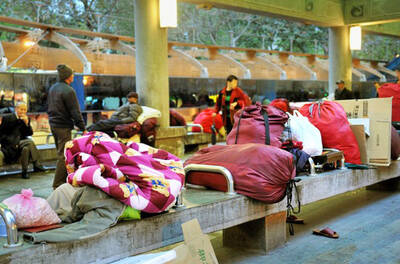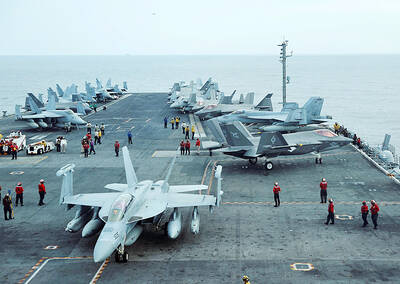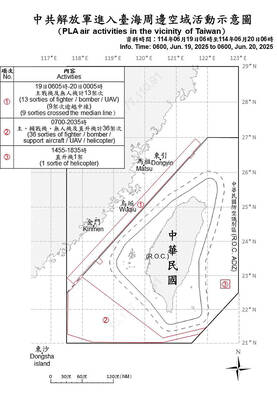About NT$25 (US$0.83) out of every NT$100 in National Health Insurance (NHI) premiums paid by the public last year was spent on treatments for patients with catastrophic illnesses, statistics from the National Health Insurance Administration show.
A total of 915,254 people held catastrophic illness cards as of December last year, which accounted for 3.87 percent of all NHI-insured individuals, a decrease of 8,142 from the previous year, the data showed.
The combined cost to the NHI program was NT$167.9 billion, about 27.3 percent of the total medical expenses over the same period, an increase of NT$5.39 billion from 2013, the agency said.
The drop in the number of catastrophic illness card holders could be due to the agency’s revision of criteria for the issuance of the cards in September 2013, when it stopped issuing cards to cancer patients who had their malignant tumors completely removed and no longer required active treatment.
“Despite the decline in the number of the cards, the medical expenses did not drop,” agency staffer Wu Ching-sung (吳錦松) said.
“That was mainly because medical costs are generally the highest during the first year of treatment for cancer patients, as they have to undergo massive surgeries or targeted cancer therapies during this period,” he said.
Wu said that 47.7 percent of the cardholders have cancer, followed by 21 percent with chronic mental illness, 9.8 percent with autoimmune diseases, 7.8 percent with chronic kidney failure requiring routine dialysis and 3.7 percent with congenital malformations.
Compared with the 2013 statistics, the largest decline was seen in the number of people given a card due to liver cirrhosis: 5.9 percent. Trailing was cancer, dropping by 3.7 percent, chronic mental illnesses (0.8 percent) and congenital malformation (0.4 percent).

A year-long renovation of Taipei’s Bangka Park (艋舺公園) began yesterday, as city workers fenced off the site and cleared out belongings left by homeless residents who had been living there. Despite protests from displaced residents, a city official defended the government’s relocation efforts, saying transitional housing has been offered. The renovation of the park in Taipei’s Wanhua District (萬華), near Longshan Temple (龍山寺), began at 9am yesterday, as about 20 homeless people packed their belongings and left after being asked to move by city personnel. Among them was a 90-year-old woman surnamed Wang (王), who last week said that she had no plans

China might accelerate its strategic actions toward Taiwan, the South China Sea and across the first island chain, after the US officially entered a military conflict with Iran, as Beijing would perceive Washington as incapable of fighting a two-front war, a military expert said yesterday. The US’ ongoing conflict with Iran is not merely an act of retaliation or a “delaying tactic,” but a strategic military campaign aimed at dismantling Tehran’s nuclear capabilities and reshaping the regional order in the Middle East, said National Defense University distinguished adjunct lecturer Holmes Liao (廖宏祥), former McDonnell Douglas Aerospace representative in Taiwan. If

TO BE APPEALED: The environment ministry said coal reduction goals had to be reached within two months, which was against the principle of legitimate expectation The Taipei High Administrative Court on Thursday ruled in favor of the Taichung Environmental Protection Bureau in its administrative litigation against the Ministry of Environment for the rescission of a NT$18 million fine (US$609,570) imposed by the bureau on the Taichung Power Plant in 2019 for alleged excess coal power generation. The bureau in November 2019 revised what it said was a “slip of the pen” in the text of the operating permit granted to the plant — which is run by Taiwan Power Co (Taipower) — in October 2017. The permit originally read: “reduce coal use by 40 percent from Jan.

‘SPEY’ REACTION: Beijing said its Eastern Theater Command ‘organized troops to monitor and guard the entire process’ of a Taiwan Strait transit China sent 74 warplanes toward Taiwan between late Thursday and early yesterday, 61 of which crossed the median line in the Taiwan Strait. It was not clear why so many planes were scrambled, said the Ministry of National Defense, which tabulated the flights. The aircraft were sent in two separate tranches, the ministry said. The Ministry of Foreign Affairs on Thursday “confirmed and welcomed” a transit by the British Royal Navy’s HMS Spey, a River-class offshore patrol vessel, through the Taiwan Strait a day earlier. The ship’s transit “once again [reaffirmed the Strait’s] status as international waters,” the foreign ministry said. “Such transits by